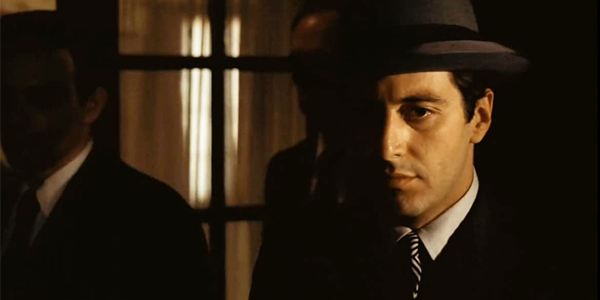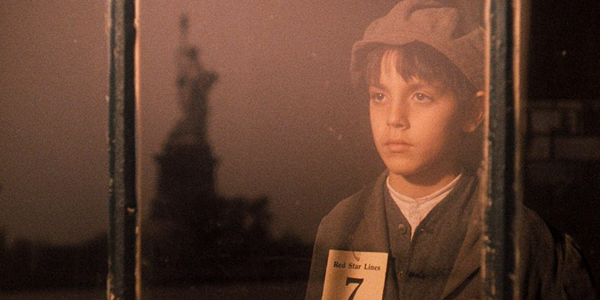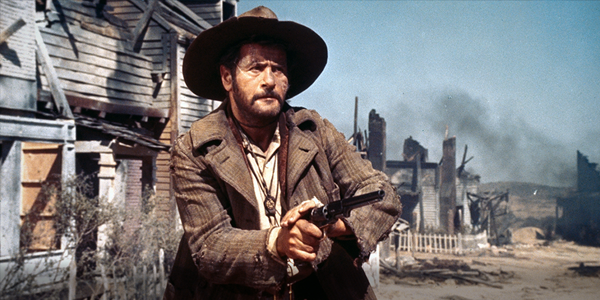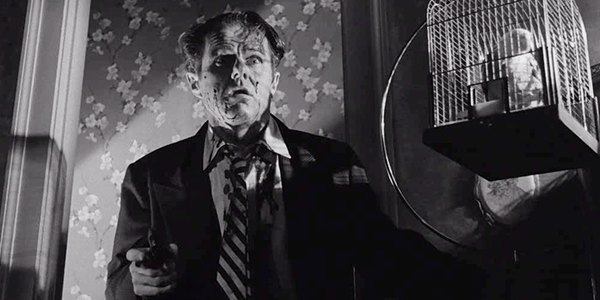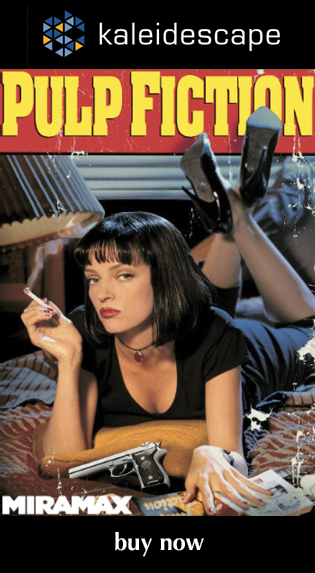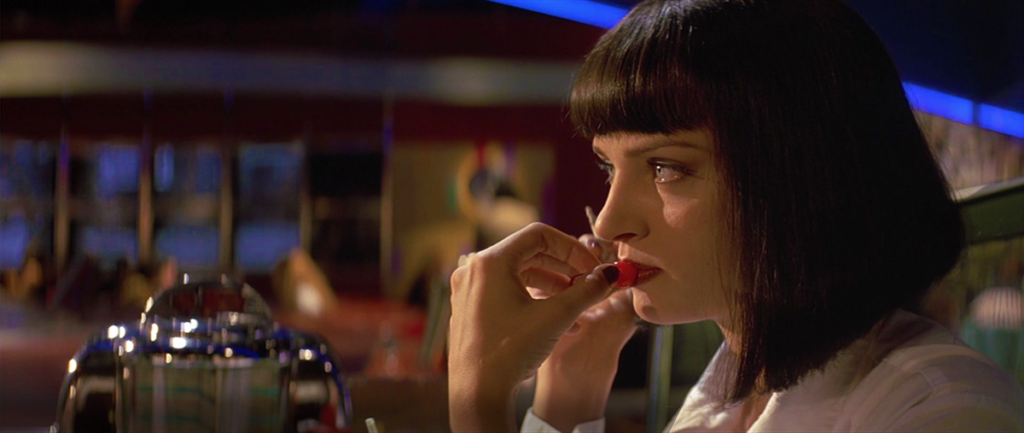
review | Pulp Fiction
The Tarantino classic gets a 4K HDR upgrade that stays remarkably true to its elegantly gritty filmic look
by Dennis Burger
December 19, 2022
It’s funny how watching a beloved film with a critical eye rather than through a fan’s rose-tinted glasses will force you to articulate things you’ve always been perfectly happy to leave nebulous. I’ve frankly never given much thought to why Pulp Fiction is one of only three Tarantino films I genuinely adore. I’ve made vague allusions to the off-putting cruelty of Reservoir Dogs and Inglourious Basterds, the meandering self-indulgence of Jackie Brown, the unflinching sadism of Django Unchained and The Hateful Eight—in short, I have excuses for why I’m bothered by the films of his that bother me, and I still haven’t entirely made my mind up about Once Upon a Time in Hollywood. But I’ve never even stopped to seriously consider why Pulp Fiction, Kill Bill, and Death Proof resonate so hard with me.
I think I found a clue in the opening credits during this, what must have been my 50th viewing of Tarantino’s sophomore directorial effort: “Stories by Quentin Tarantino & Roger Avary.” You don’t see a lot of ampersands in Tarantino’s opening or closing credits sequences, at least not as pertains to story or script. But it turns out the only films of his that truly work for me are, in some way or another, collaborative in their original conception.
It’s difficult to deny that Pulp Fiction holds a special spot in the filmmaker’s oeuvre, and that Avary’s contributions—primarily the story of boxer Butch Coolidge, played by Bruce Willis—give the narrative a little more heart and humanity than is typical of Tarantino’s work. But it’s also difficult to deny the quotability of nearly every line of dialogue, the effectiveness of the near-constant dark humor, nor the exceptional plotting and pacing, all of which QT deserves credit for.
I’m guessing at the mere mention of the name of the film, many cinephiles of a certain vintage can immediately recall its most salient elements. But Pulp Fiction is one of those rare modern films in which the individual parts and the sum thereof are of relatively equal merit. Its moments may be burned into your memory but how they unfold and entangle and interconnect from one to the next is the bulk of the reason for the enduring power of Pulp Fiction to surprise and delight nearly any time you watch it.
Mind you, that’s true of the film whether you watch it on Laserdisc, VHS, DVD, Blu-ray, or the new UHD/HDR release from, of all studios, Paramount, a fact that unnerved me when I realized it. The studio doesn’t have the most consistent track record when it comes to 4K remasters so there’s the obvious question of whether you’re going to end up with a Godfather or a Godfather Part II.
Thankfully, it’s the latter. Granted, the elements of Pulp Fiction are newer and have been much better preserved, but it looks like aside from recompositing some titles, the only thing the restorers and graders behind this new release did was scan the negative, set the peak brightness level at something resembling the intensity of projected film, and pat themselves on the back for a job not done.
Which is, exactly how it ought to be. Pulp Fiction in 4K positively brims with organic but exceedingly fine grain and the sort of gorgeous halation you get with 35mm film. The golden hues of its Eastman stock haven’t been diddled with a bit, most of the expanded dynamic range comes from the lower end of the value scale, and the color palette just has a weensy bit more room to breathe without bumping into the limits of the smaller gamut of older home video formats.
In short, this release just looks like film, and although Kaleidescape’s release is limited to HDR10, I’m not seeing anything here that would benefit from the dynamic metadata of the Dolby Vision version released on UHD Blu-ray and iTunes. What I am seeing is a wealth of textures and details that legitimately add to the experience of watching the film. It’s not razor-sharp and shouldn’t be—thank goodness no one saw fit to scrub and sharpen the film once it was scanned, and even the minor amount of edge enhancement found on the most recent Blu-ray seems to be missing—but it’s now easier to see little elements that have been obscured by previous home video releases. The tiny details to be found in Jack Rabbit Slim’s now read so clearly that Vince’s line, “It’s like a wax museum with a pulse,” lands so much harder because it feels so much truer. And it’s hard not to miss the grime on the walls of Butch’s grimy motel room now, nor the title of Modesty Blaise the first time we see Vince clutching it.
The enhanced and unfettered detail of this new scan also more clearly reveals the character of the medium at times. As Butch and Esmeralda Villalobos speed away from his final fight in the latter’s cab, you can see cinematographer Andrzej Sekula struggling to pull focus while trying to capture fast-moving action at night with an anamorphic lens. Later, you can more clearly see the artifacts of the split diopter as Butch runs around a corner to hide from a distant Marsellus Wallace and both have to remain in focus.
Far from distracting from the experience, though, these little quirks serve as a technical indicator of something Tarantino is constantly reminding us of with narrative and other cinematic techniques: There’s a reason this film wasn’t called Based on a True Story. This isn’t how real life works. This is pastiche. This is homage. And there’s something curious about the fact that a pristine scan of the original elements, which makes the imagery more three-dimensional and beautifully resolved than ever before, legitimately serves to subtly enhance and underscore the inherent and intentional tawdry artifice of it all.
The only thing I would change about the presentation is the audio. And no, I don’t want a new Dolby Atmos remix. But I do think Pulp Fiction would benefit from a new nearfield mix specifically for home cinema.
Kaleidescape’s DTS-HD Master Audio 5.1 track sounds identical to the one found on all of the film’s sundry Blu-ray releases, and it’s pretty great overall. It’s wonderfully dynamic and, due to QT’s disdain for ADR, all of the dialogue has a natural “in the room” quality I dig quite a bit. You’ll push your center speaker to its limits, and if your sound system is up to snuff, you’ll even notice some little character flaws like the saturation-verging-on-clipping of Sam Jackson’s voice as he forcefully yells his mangled Biblical mantra at the soon-to-be-ex-Brett.
The only problem with the sound is that the surround channels are mixed for a room that’s 50 feet wide or more, not 25 feet or less. They’re a bit too high in the mix and occasionally impose on not only dialogue but also the sense of scale. It’s not a major deal—it’s 95% of the way there as is. But a good nearfield re-recording mixer could have transformed this release from near-perfect to transcendental.
One other nit to pick is that Paramount is being precious with its bonus features again. The Kaleidescape release lacks all of the bonus goodies found on the new UHD Blu-ray, which to be fair were pulled from the original special edition DVD and a couple of subsequent Blu-ray releases. You can find most of them on YouTube, but it would be nice to have the deleted scenes and especially the retrospective feature Not the Usual Mindless Boring Getting to Know You Chit Chat collected with the film itself.
So if you own an older copy of the film that includes those supplements, perhaps hang onto it. But one way or another, if you’re a fan of Pulp Fiction, you need to see this new scan, and Kaleidescape’s download is an excellent way of acquiring it.
Dennis Burger is an avid Star Wars scholar, Tolkien fanatic, and Corvette enthusiast who somehow also manages to find time for technological passions including high-end audio, home automation, and video gaming. He lives in the armpit of Alabama with his wife Bethany and their four-legged child Bruno, a 75-pound American Staffordshire Terrier who thinks he’s a Pomeranian.
PICTURE | Pulp Fiction in 4K positively brims with organic but exceedingly fine grain and the sort of gorgeous halation you get with 35mm film. It also offers a wealth of textures and details that legitimately add to the experience of watching the film.
SOUND | The DTS-HD Master Audio 5.1 track is pretty great overall but the surround channels are mixed for a room that’s 50 feet wide or more, not 25 feet or less
© 2025 Cineluxe LLC


